#CarlLinnaeus assigned the scientific name Musa sapientum for dessert #bananas & Musa paradisiaca for plantains. However, he did not know that the two species he described were in fact hybrids and not two distinct species.
#TheHistoryOfTheBanana
#TheHistoryOfTheBanana
Linnaeus was not the only one struggling with banana classification. This task has always been complex and also challenges contemporary botanists and breeders. He developed the taxonomic genus #Musa, and Latin binomial names are currently strictly designated to wild relatives
In the last decades, #banana classification has undergone a new #nomenclature, taking both genetic and genomic aspects of the banana into account. #Musaparadisiaca and #Musasapientum are not used anymore, and for cultivated bananas, a new system has been used since the & #39;50s
Within the cultivated bananas, there are 4 known #genomes represented by the letters A, B, S and T corresponding to the wild #Eumusa species Musa acuminata, M. balbisiana, M. schizocarpa and M. australimusa, respectively.
Edible bananas belong to the genus Musa and are hybrids, originating from natural and spontaneous inter
and intra-specific crosses of the two diploid, seeded ancestors M. acuminata (genome-AA) and M. balbisiana (genome-BB).
#bananaseeds
and intra-specific crosses of the two diploid, seeded ancestors M. acuminata (genome-AA) and M. balbisiana (genome-BB).
#bananaseeds
Before I forget. The genus Musa is divided into 4 sections: based on the number of #Chromosomes (see photo). The majority of edible bananas included in Eumusa. The late Finnish botanist #MarkkuHäkkinen proposed a simplification: #Callimusa (A+C) and #Musa (E+R)
Cultivated hybrid #bananas are also classified into #genome groups and subgroups according to the relative contribution of their ancestral wild relatives. The classification proposed by Simmonds & Shepherd (1955) is currently the most common system to classify edible bananas.
#SoutheastAsia is generally considered to be the main
gene centre of banana, particularly Malaysia and Indonesia. However, the Indian subcontinent and Africa, specifically for the East African Highland bananas ( #EAHB), have
been considered as secondary centres of diversification
gene centre of banana, particularly Malaysia and Indonesia. However, the Indian subcontinent and Africa, specifically for the East African Highland bananas ( #EAHB), have
been considered as secondary centres of diversification
Domestication started ˜7,000 years ago. In a nutshell: this occurred by multiple spontaneous hybridization b/w various sp. & subs. It involved spontaneous seed abortion and selection of seedless di & triploids along
with #parthenocarpy, which enabled vegetative propagation.
with #parthenocarpy, which enabled vegetative propagation.
In short, domestication provided mankind with a suite of edible germplasm with AA, BB, AB, AAA, AAB, and ABB genome combinations, which all belong to the taxonomic family of the #Musaceae and are available at many locations and #genebanks such as ITC
Photo @Pathh1
Photo @Pathh1
Unfortunately, only a fraction of the global diversity is available in these repositories and likewise, only a limited fraction is globally consumed/produced depending on taste and cooking preferences (e.g. #Cavendish (57%), other desserts (13%), cooking types 30%)
Without a doubt, the #Cavendish banana is the king of the fruits, and virtually the only type of banana found in many supermarkets around the world. A simple clone that dominates the market and of course, that& #39;s a problem, but We& #39;ll see that in another thread. Thank you!  https://abs.twimg.com/emoji/v2/... draggable="false" alt="😚" title="Kussgesicht mit geschlossenen Augen" aria-label="Emoji: Kussgesicht mit geschlossenen Augen">
https://abs.twimg.com/emoji/v2/... draggable="false" alt="😚" title="Kussgesicht mit geschlossenen Augen" aria-label="Emoji: Kussgesicht mit geschlossenen Augen">
Thank you very much for joining me today. We& #39;ll see each other in a new banana thread, maybe about banana seeds? Banana flowers? Breeding? Fusarium? #PanamaDisease? Who knows? Maybe banana recipes.
Hasta banana... I mean, hasta mañana
Hasta banana... I mean, hasta mañana
Former #Musa paradisiaca and M. sapientum.
Left: dessert banana #cavendish (AAA) and right: cooking banana aka #plantain and my dinner today (AAB).
Remember, they are hybrids
A https://abs.twimg.com/emoji/v2/... draggable="false" alt="↔️" title="Links-rechts-Pfeil" aria-label="Emoji: Links-rechts-Pfeil">M. acuminata;
https://abs.twimg.com/emoji/v2/... draggable="false" alt="↔️" title="Links-rechts-Pfeil" aria-label="Emoji: Links-rechts-Pfeil">M. acuminata;
B https://abs.twimg.com/emoji/v2/... draggable="false" alt="↔️" title="Links-rechts-Pfeil" aria-label="Emoji: Links-rechts-Pfeil">M. balbisiana
https://abs.twimg.com/emoji/v2/... draggable="false" alt="↔️" title="Links-rechts-Pfeil" aria-label="Emoji: Links-rechts-Pfeil">M. balbisiana
Left: dessert banana #cavendish (AAA) and right: cooking banana aka #plantain and my dinner today (AAB).
Remember, they are hybrids
A
B

 Read on Twitter
Read on Twitter

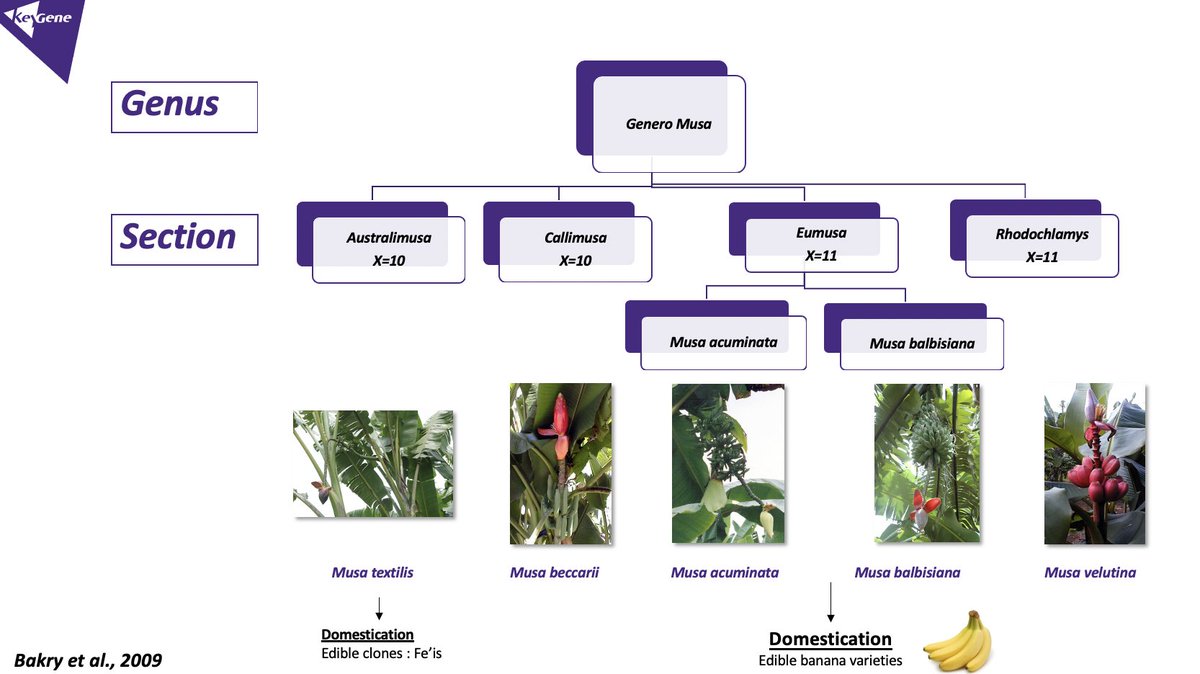
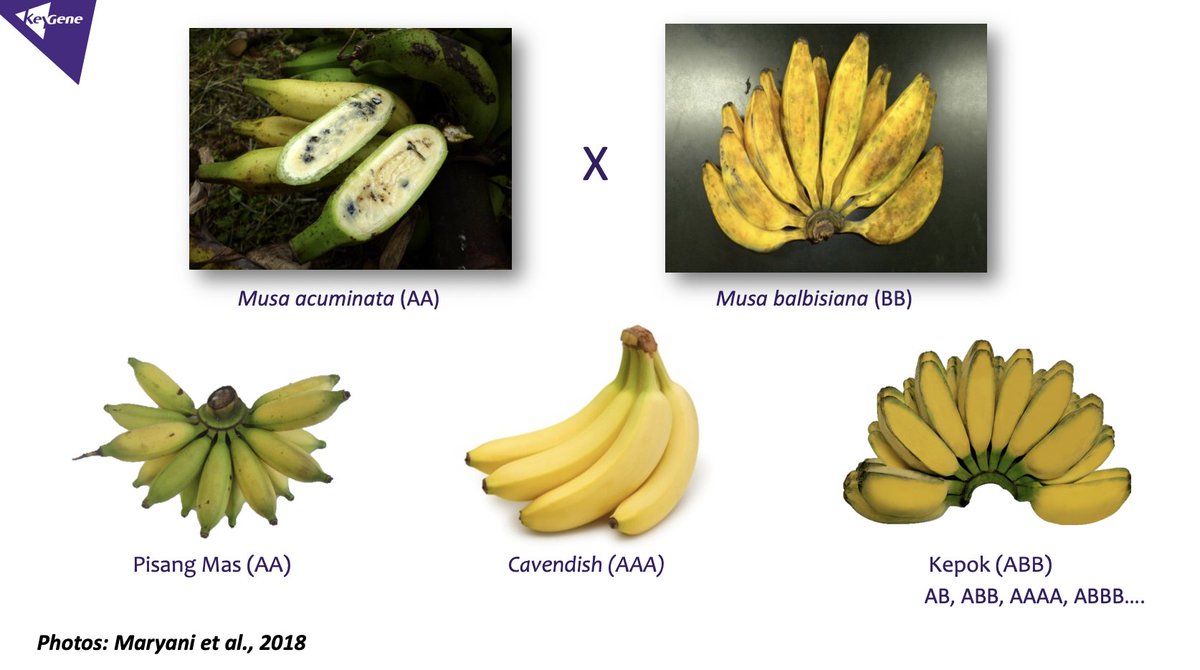
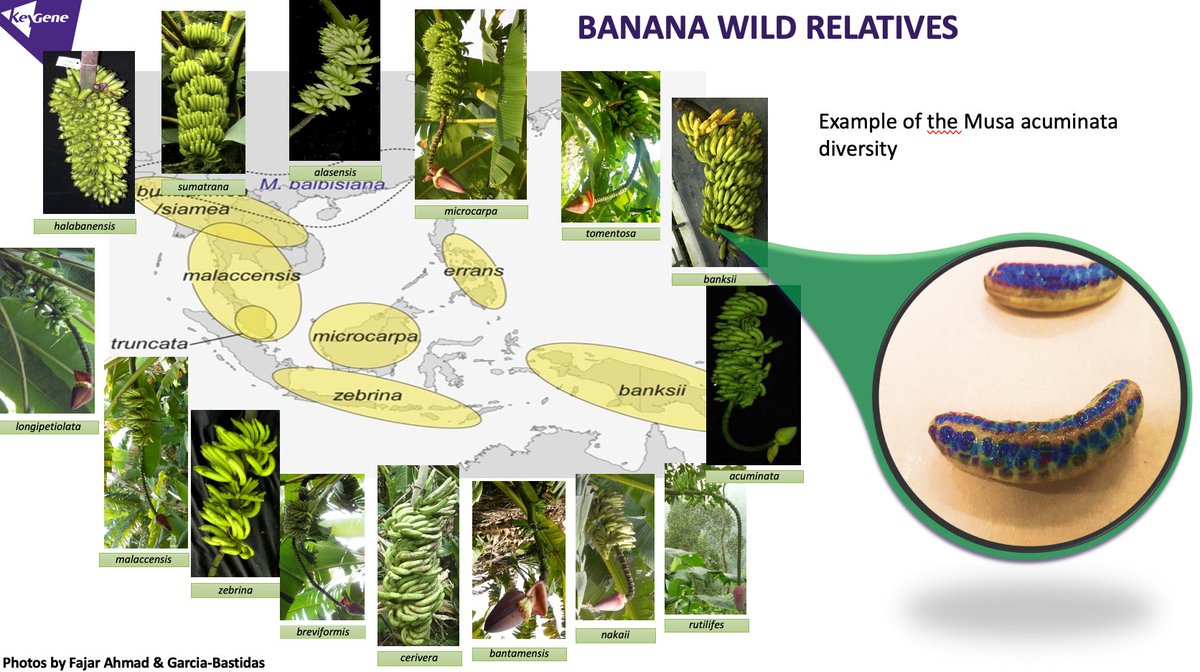


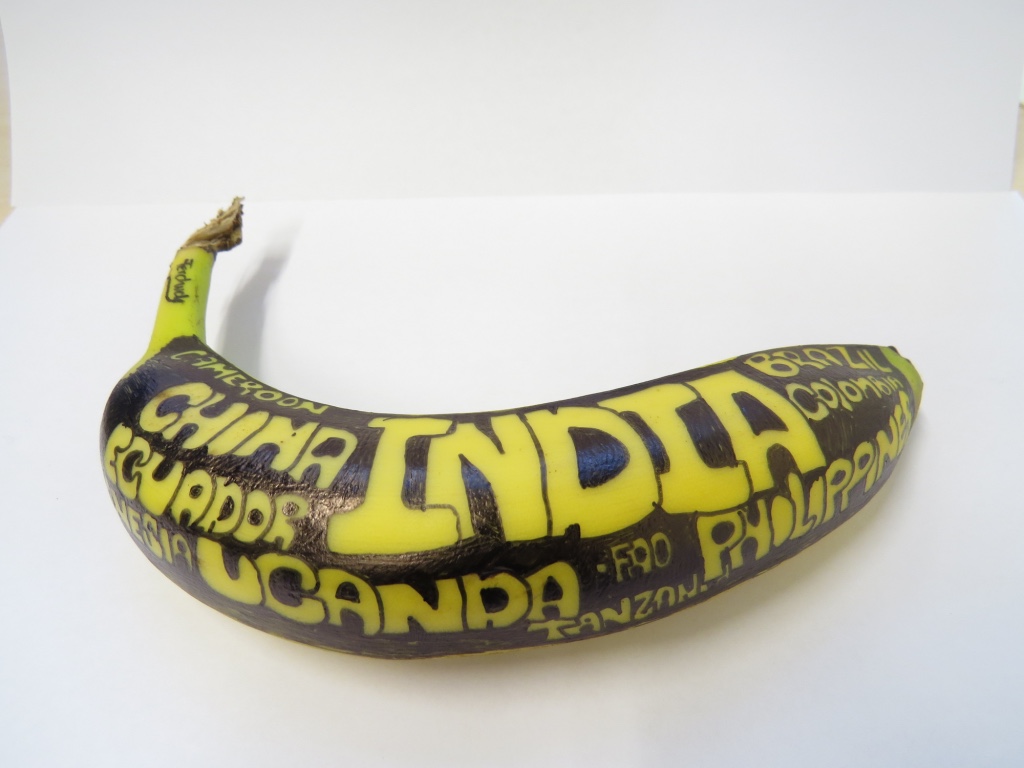

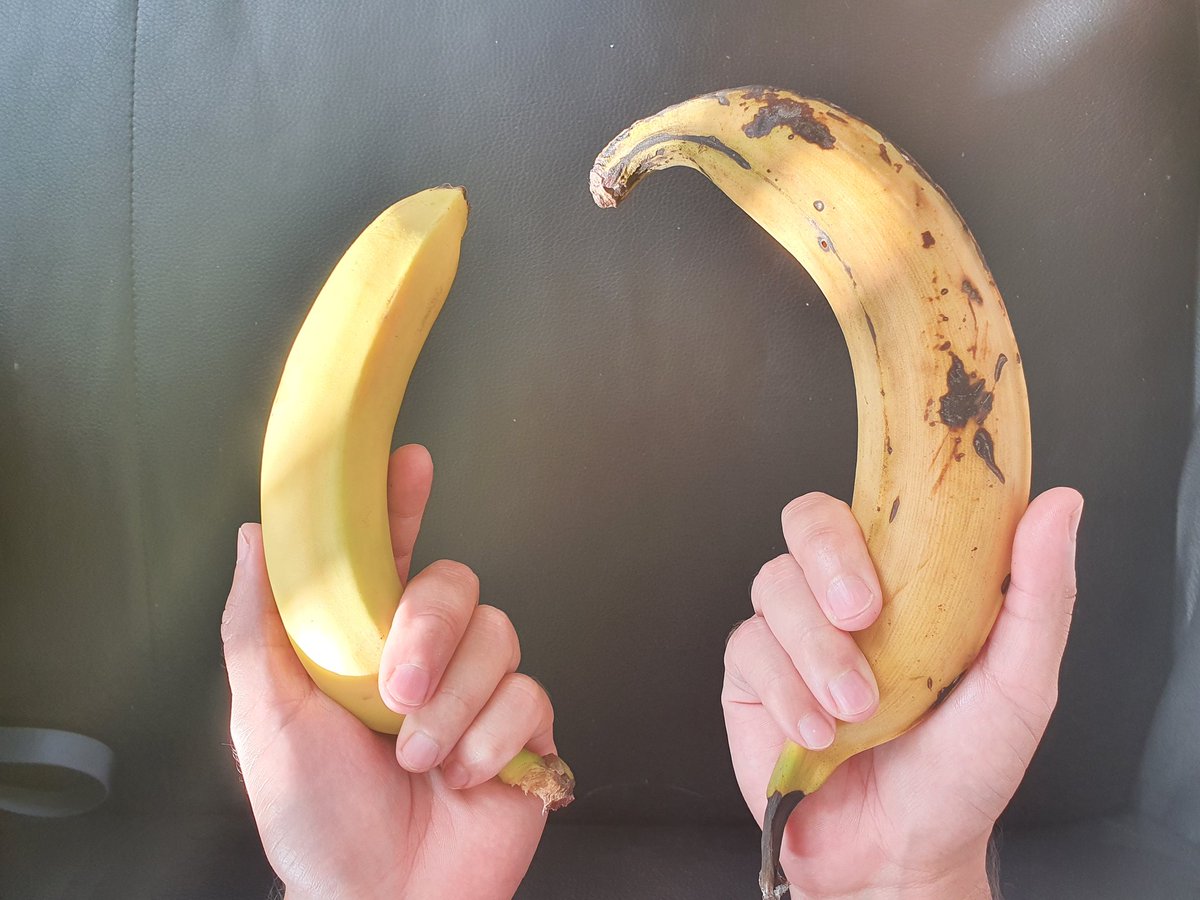 M. acuminata; B https://abs.twimg.com/emoji/v2/... draggable="false" alt="↔️" title="Links-rechts-Pfeil" aria-label="Emoji: Links-rechts-Pfeil">M. balbisiana" title="Former #Musa paradisiaca and M. sapientum.Left: dessert banana #cavendish (AAA) and right: cooking banana aka #plantain and my dinner today (AAB).Remember, they are hybridsA https://abs.twimg.com/emoji/v2/... draggable="false" alt="↔️" title="Links-rechts-Pfeil" aria-label="Emoji: Links-rechts-Pfeil">M. acuminata; B https://abs.twimg.com/emoji/v2/... draggable="false" alt="↔️" title="Links-rechts-Pfeil" aria-label="Emoji: Links-rechts-Pfeil">M. balbisiana">
M. acuminata; B https://abs.twimg.com/emoji/v2/... draggable="false" alt="↔️" title="Links-rechts-Pfeil" aria-label="Emoji: Links-rechts-Pfeil">M. balbisiana" title="Former #Musa paradisiaca and M. sapientum.Left: dessert banana #cavendish (AAA) and right: cooking banana aka #plantain and my dinner today (AAB).Remember, they are hybridsA https://abs.twimg.com/emoji/v2/... draggable="false" alt="↔️" title="Links-rechts-Pfeil" aria-label="Emoji: Links-rechts-Pfeil">M. acuminata; B https://abs.twimg.com/emoji/v2/... draggable="false" alt="↔️" title="Links-rechts-Pfeil" aria-label="Emoji: Links-rechts-Pfeil">M. balbisiana">
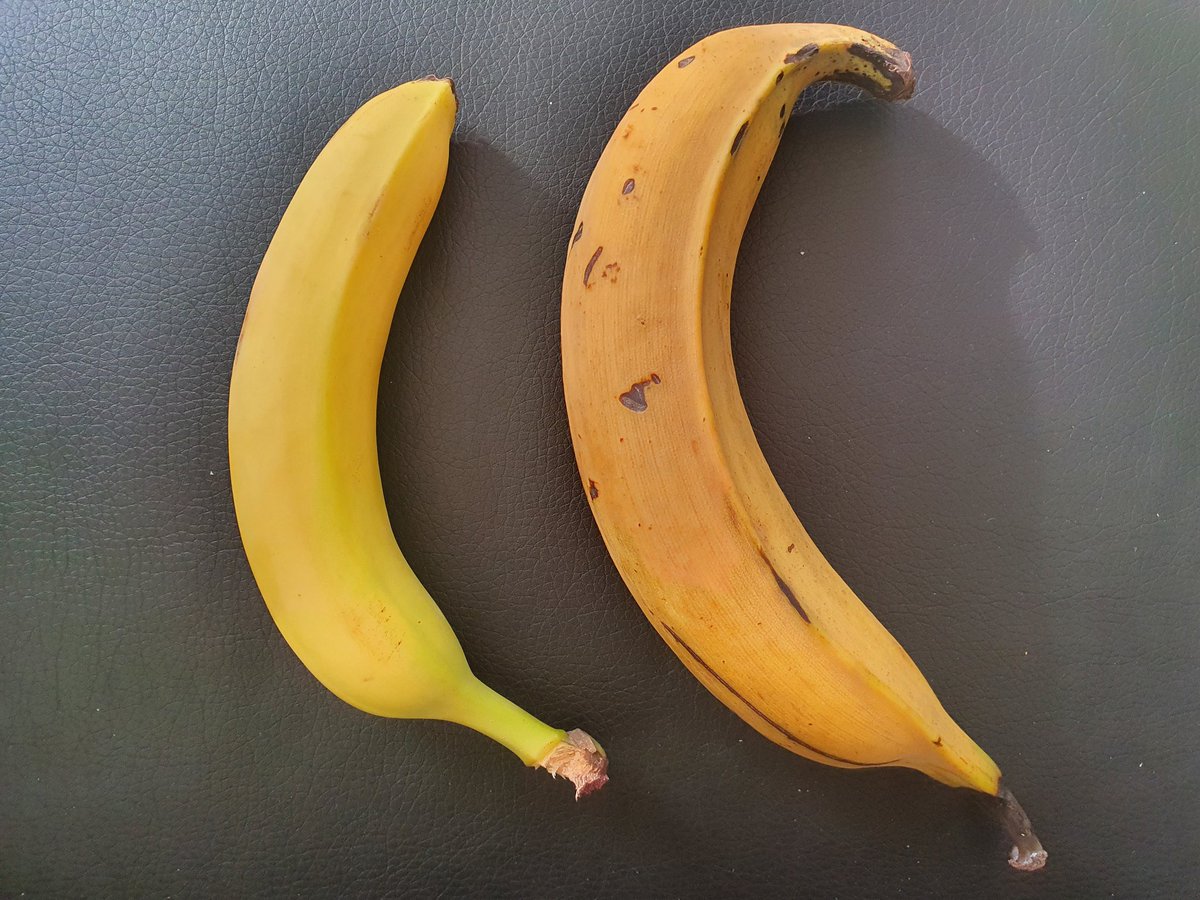 M. acuminata; B https://abs.twimg.com/emoji/v2/... draggable="false" alt="↔️" title="Links-rechts-Pfeil" aria-label="Emoji: Links-rechts-Pfeil">M. balbisiana" title="Former #Musa paradisiaca and M. sapientum.Left: dessert banana #cavendish (AAA) and right: cooking banana aka #plantain and my dinner today (AAB).Remember, they are hybridsA https://abs.twimg.com/emoji/v2/... draggable="false" alt="↔️" title="Links-rechts-Pfeil" aria-label="Emoji: Links-rechts-Pfeil">M. acuminata; B https://abs.twimg.com/emoji/v2/... draggable="false" alt="↔️" title="Links-rechts-Pfeil" aria-label="Emoji: Links-rechts-Pfeil">M. balbisiana">
M. acuminata; B https://abs.twimg.com/emoji/v2/... draggable="false" alt="↔️" title="Links-rechts-Pfeil" aria-label="Emoji: Links-rechts-Pfeil">M. balbisiana" title="Former #Musa paradisiaca and M. sapientum.Left: dessert banana #cavendish (AAA) and right: cooking banana aka #plantain and my dinner today (AAB).Remember, they are hybridsA https://abs.twimg.com/emoji/v2/... draggable="false" alt="↔️" title="Links-rechts-Pfeil" aria-label="Emoji: Links-rechts-Pfeil">M. acuminata; B https://abs.twimg.com/emoji/v2/... draggable="false" alt="↔️" title="Links-rechts-Pfeil" aria-label="Emoji: Links-rechts-Pfeil">M. balbisiana">


